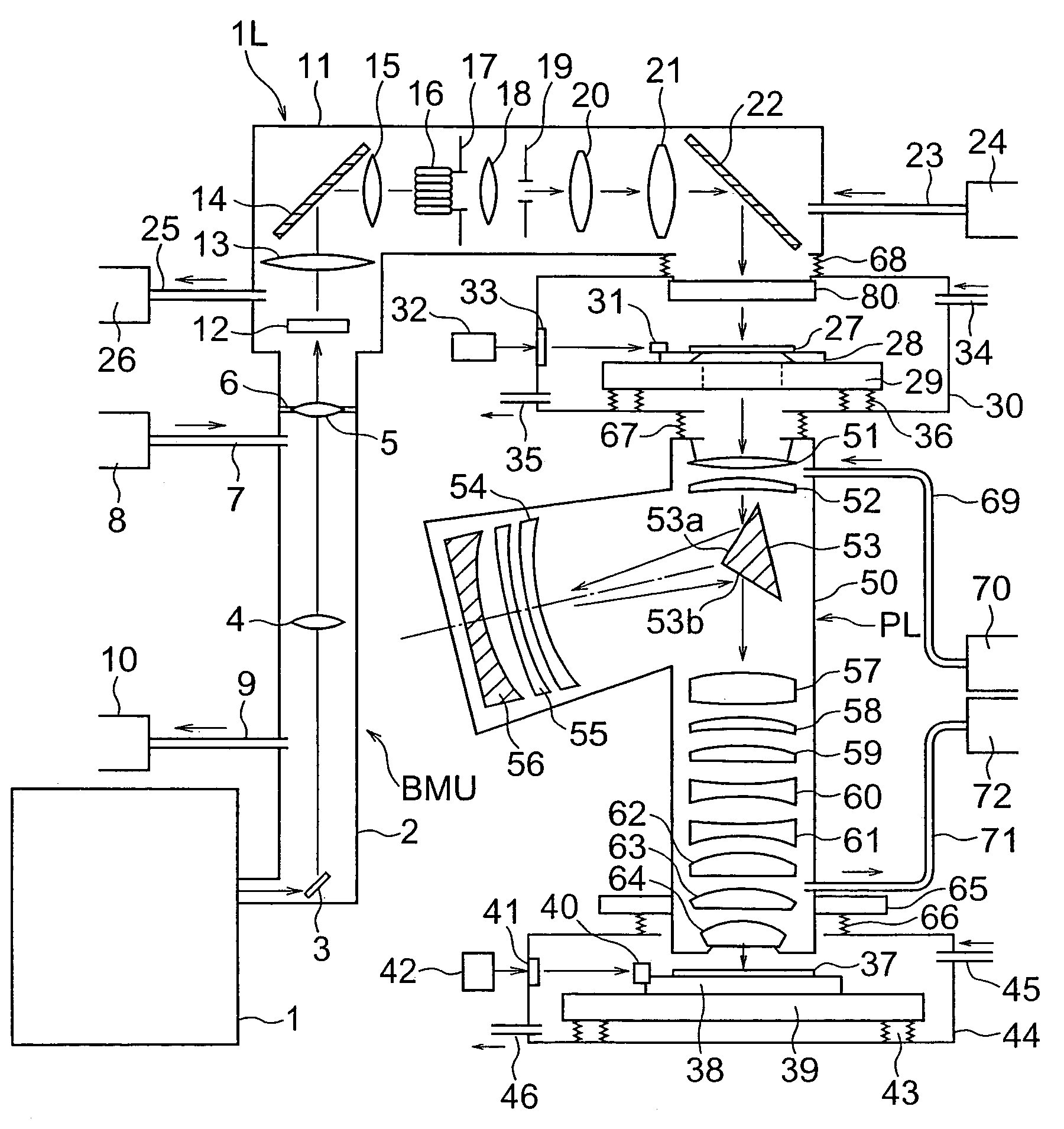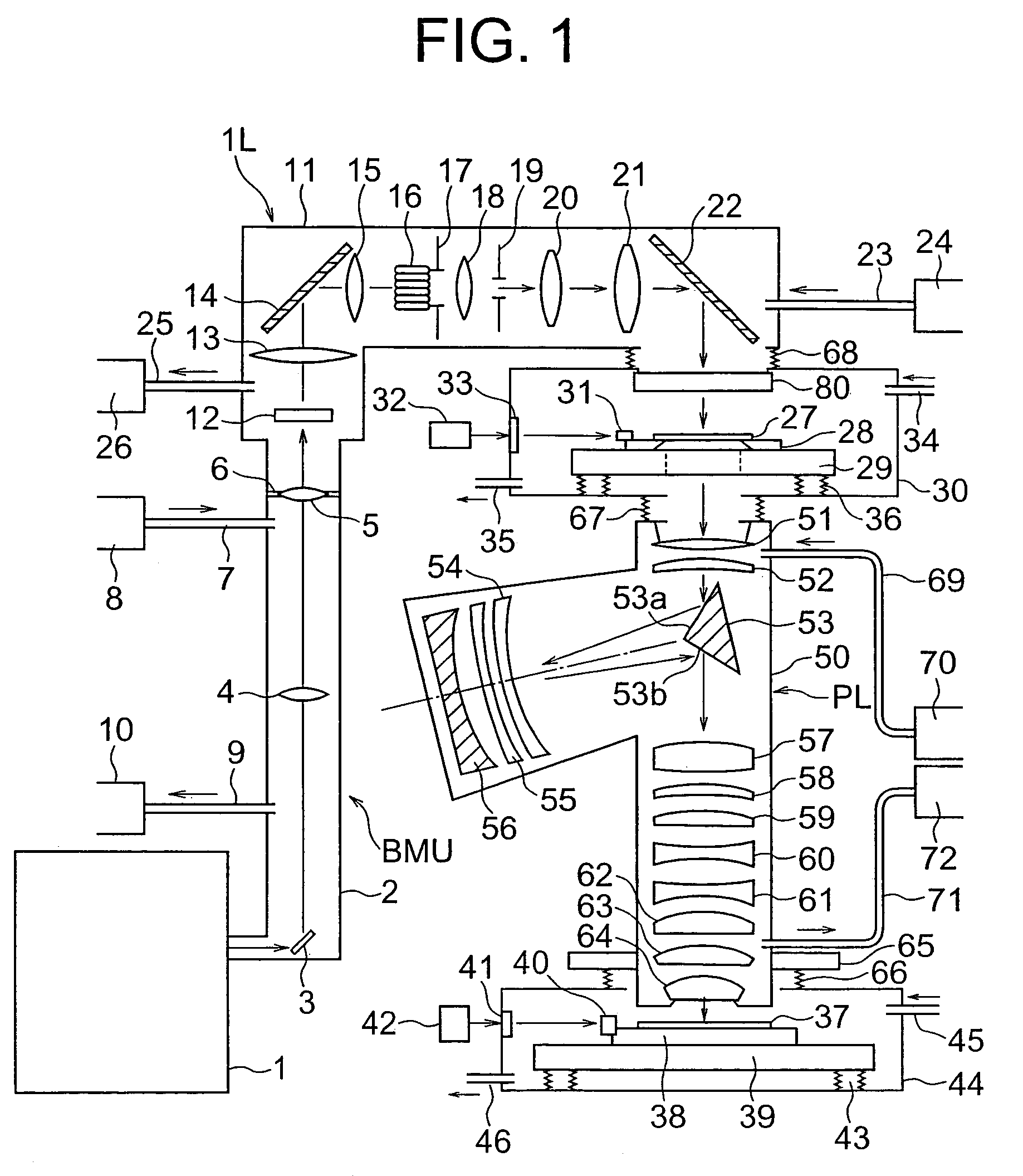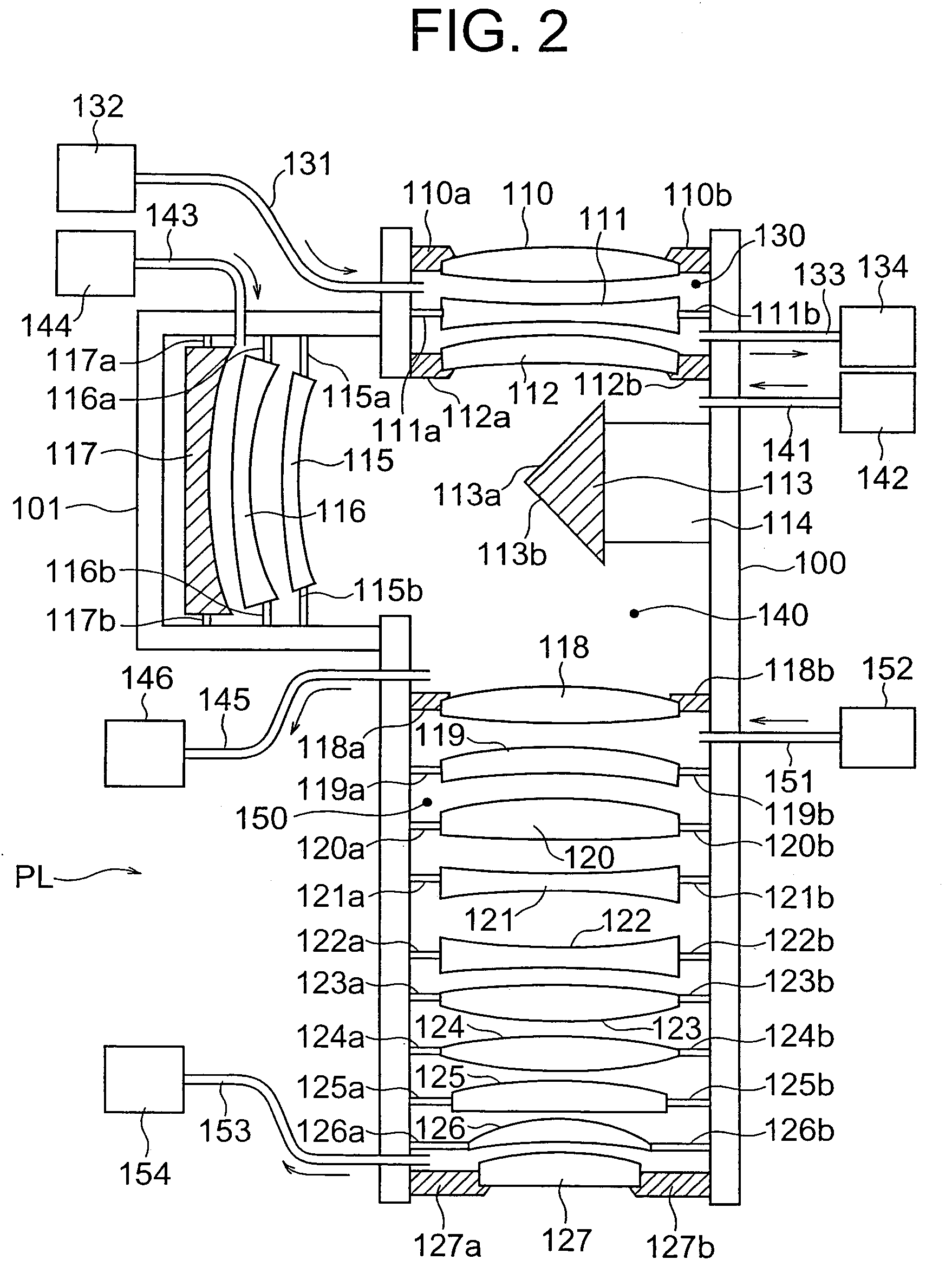Exposure apparatus and exposure method
a technology which is applied in the field of exposure apparatus and exposure method, can solve the problems of color aberration correction difficulty, sharp drop of reflectance, and oxidation of antireflection coatings formed on the lens surface, and achieve the effect of maintaining the initial performan
- Summary
- Abstract
- Description
- Claims
- Application Information
AI Technical Summary
Benefits of technology
Problems solved by technology
Method used
Image
Examples
first embodiment
[0058]Below, embodiments of the present invention will be explained using the drawings. FIG. 1 is a view of the general configuration of an exposure apparatus according to the present invention. This exposure apparatus is a step-and-scan type (scan type) projection exposure apparatus. A light beam emitted from a wavelength 157 nm fluorine laser (F2 laser), wavelength 146 nm krypton dimer laser (Kr2 excimer laser), wavelength 126 nm argon dimer laser (Ar2 excimer laser), or other vacuum ultraviolet region light source 1 is irradiated through a beam matching unit (however, in the broad sense, part of an illumination optical system) BMU and an illumination optical system IL to a mask 27, whereby patterns on the mask 27 are projected by a projection optical system PL on a wafer 37.
[0059]The beam matching unit BMU is comprised of a bending mirror 3 and relay lenses 4, 5 housed in a BMU chamber 2. The illumination light beam is guided to a diffraction optical element 12 housed in an illum...
second embodiment
[0063]Note that the above beam matching unit BMU and illumination optical system IL are housed in the BMU chamber 2 and illumination system chamber 11 provided with the highly air-tight partition walls, so are isolated from the outside space. The BMU chamber 2 and illumination system chamber 11 are separated in inside space (light path space) by the relay lens 5 and its support member 6. The aperture of the mask 27 side end of the illumination system chamber 11 is sealed air-tightly by a transparent plate 80. The relay lens 5 and support member 6 are configured in the same way as a seal member 191 and support member 192 of the later explained
[0064]The light beam passing through the mask 27 is imaged by the projection optical system PL housed in the barrel 50 and forms images of the patterns of the mask 27 on the wafer 37. The light beam emitted from the mask 27, in the projection optical system 50, passes through the lenses 51, 52 and is reflected at an upper reflection surface 53a ...
third embodiment
[0098]Note that, in this third embodiment, a single type of gas is fed to the barrels 100, 101 of the projection optical system PL, so the gas feeders 162, 165, 168, 170 may also be combined into a single feeder.
[0099]Further, in this third embodiment, the low absorption gas was made helium, but when there is no need to positively cool the mirrors 113, 117, it may be nitrogen or another rare gas as well. Further, as in the first and second embodiments, it is possible to use a gas comprised of nitrogen or a rare gas in which a predetermined concentration of hydrogen is mixed so as to prevent oxidation of the mirrors 113, 117 better. Note that, the gas blowing mechanism in the third embodiment may also be applied to the first and second embodiments.
[0100]Further, as in this third embodiment, the method of locally blowing on the mirrors 113, 117 a low absorption gas to prevent their oxidation may also be applied to the lenses of the projection optical system PL and the optical elements...
PUM
| Property | Measurement | Unit |
|---|---|---|
| wavelength band | aaaaa | aaaaa |
| wavelength band | aaaaa | aaaaa |
| reflectance | aaaaa | aaaaa |
Abstract
Description
Claims
Application Information
 Login to View More
Login to View More - R&D
- Intellectual Property
- Life Sciences
- Materials
- Tech Scout
- Unparalleled Data Quality
- Higher Quality Content
- 60% Fewer Hallucinations
Browse by: Latest US Patents, China's latest patents, Technical Efficacy Thesaurus, Application Domain, Technology Topic, Popular Technical Reports.
© 2025 PatSnap. All rights reserved.Legal|Privacy policy|Modern Slavery Act Transparency Statement|Sitemap|About US| Contact US: help@patsnap.com



